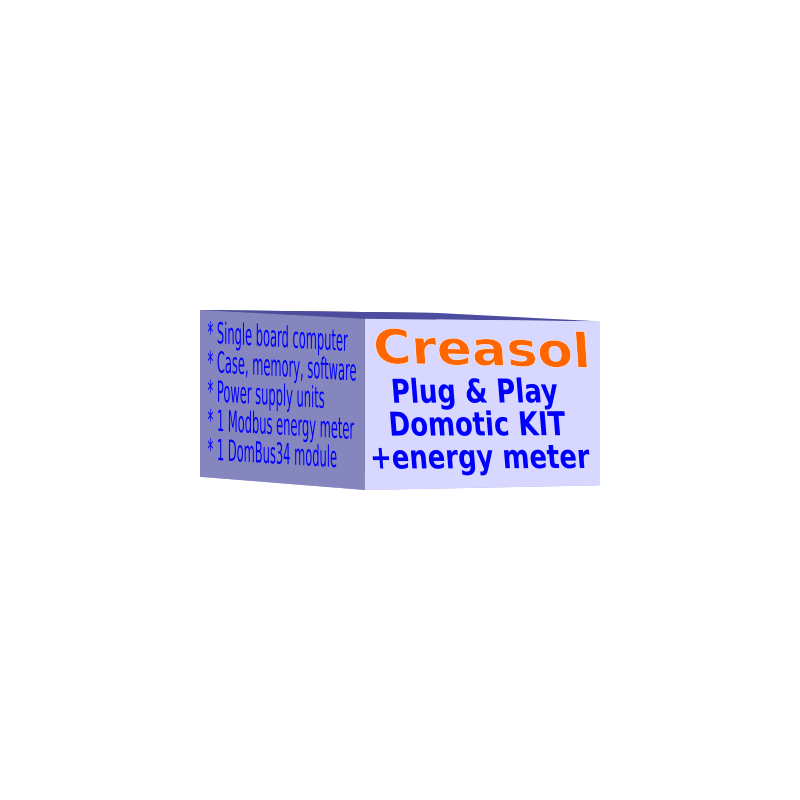

Email: store@creasol.it - Telegram: CreasolTech - Whatsapp: +393283730010
Priority mail: fast and cheap - Express Courier: fast and safe
Before returning products, please contact us

Plug & Play home automation KIT with 1 energy meter and DomBus34 module that permits to manage up to 4 energy meters, control 2 loads (relays) and check 230V voltage presence.
 Full support: most products are designed by us!
Full support: most products are designed by us!
Email: store@creasol.it - Telegram: CreasolTech - Whatsapp: +393283730010
 Orders are shipped within 1 working day
Orders are shipped within 1 working day
Priority mail: fast and cheap - Express Courier: fast and safe
 24 months warranty, easy return/refund in case of problem
24 months warranty, easy return/refund in case of problem
Before returning products, please contact us
Ready to use KIT for home automation system that includes Rock PI S single-board computer ARM 64bit, metal enclosure, high-endurance 32GB memory card within Debian Linux, Domoticz, firewall and backup system.
It also includes 1 Modbus power and energy meter, to measure power, energy, voltage, frequency and power factor, 1 USB/RS485 adapter to connect DomBus modules to the Rock PI S, 2 power supply unit and 1 DomBus34 domotic module: it manages up to 4 energy meters, have 2 relay outputs to enable/disable appliances, 1 AC input to monitor 230V presence, and 2 low voltage inputs that can be connected to pushbuttons, switches, gas and water meters, ...
This is a start kit, plug and play, that permits to build a domotic system easily and start monitoring the building consumption with nice charts and compare function in a week by week, month by month and year by year basis.
When connected to the power supply and LAN, it's possible to connect to its IP address (automatically assigned by the DHCP service) through:
Rock PI S is a smaller and cheaper alternative for the (often not available) Raspberry PI 4 single board computer, with less RAM but with a compact form factor and very low power consumption, ideal solution for optimized software like Domoticz (written in C++).
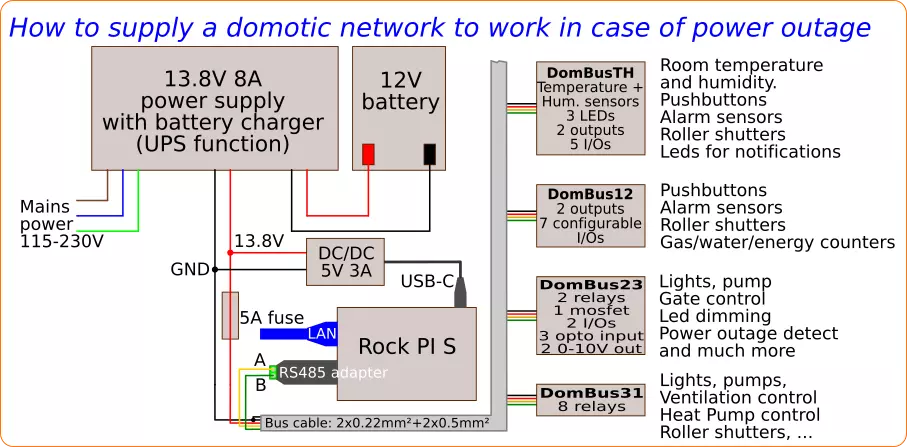
It should be supplied by:
The microSD already includes Domoticz home automation system: this is a free open source software written in C++, that works perfectly even in this small hardware.
Domoticz permits to manage serveral different type of hardwards, like ZigBee, ZWave, and many other wireless and wired protocols. Also, Creasol DomBus protocol is supported, so it's possible to connect through a RS485-USB adapter, many modules (for analog/digital inputs, analog/digital outputs, relay outputs, sensors, LEDs, lights management, EVSE to manage electric vehicle charging, ...).
Using Domoticz and DomBus modules it's possible to:
Many hardware plugins can be installed and updated automatically. Also, many scripting languages are available to create simple and complex automations, like Lua and Python. Very simple automations can be created using a graphical language, named Blocky.
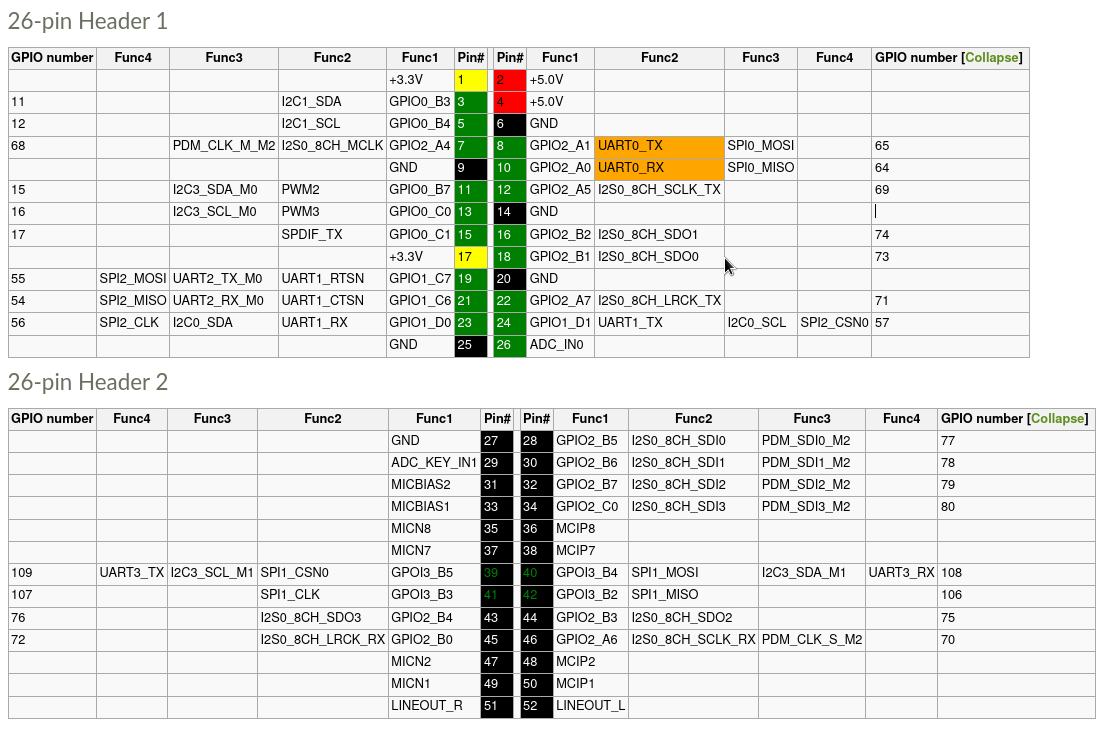
RK3308 have two IO voltages, 1.8V/3.3V. For ROCK Pi S, the voltage level of GPIOs showed in the tables above are 3.3V and tolerance of those are 3.63V.
Rockchip RK3308 GPIO has 5 banks, GPIO0 to GPIO4, each bank has 32pins, naming as below:
GPIO0_A0 ~ A7 GPIO0_B0 ~ B7 GPIO0_C0 ~ C7 GPIO0_D0 ~ D7 GPIO1_A0 ~ A7 .... GPIO1_D0 ~ D7
For Rockchip 4.4 kernel, the GPIO number can be calculated as below, take GPIO4_D3(PIN8 on 26PIN GPIO) as an example:
GPIO4_D3 = 32*4 + 8*3 + 3 = 155
To set GPIO4_D3 output
cd /sys/class/gpio echo 155 > export cd gpio155 echo out > direction echo 1 > value # output high echo 0 > value # output low
The following video shows a presentation of some domotic modules designed and produced in Italy by Creasol to make a reliable, easy and power-optimized home automation system.
The next video shows our Smart EVSE module that can be used to charge the electric car by using only solar power, or adding 25/50/75/100% of available power from the electrical grid.
Our industrial and home automation modules are designed to be
Modules are available in two version:
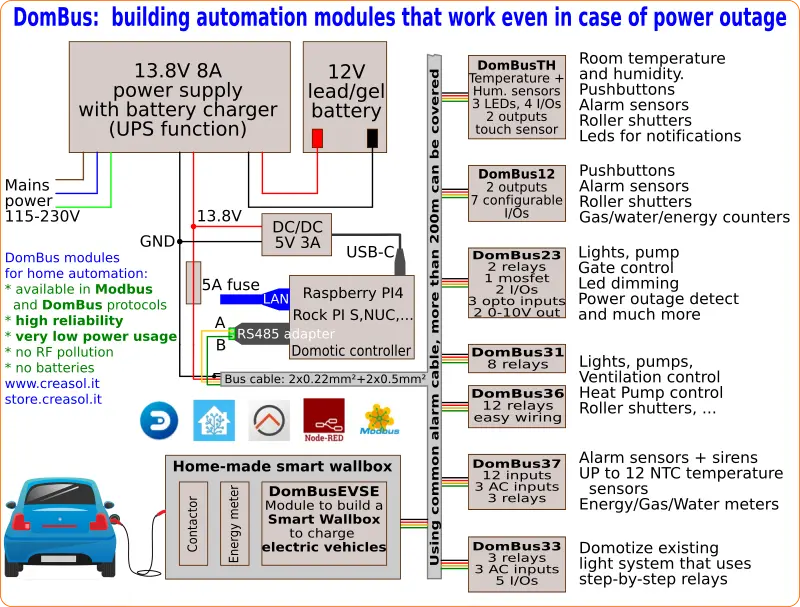
Store website - Information website
For our products we can offer FULL SUPPORT and CUSTOMIZATION: please contact us by Email or Telegram
 Complete solution to make a Smart EVSE, charging the electric vehicle using only energy from renewable source (photovoltaic, wind, ...), or adding 25-50-75-100% of available power from the grid.
Complete solution to make a Smart EVSE, charging the electric vehicle using only energy from renewable source (photovoltaic, wind, ...), or adding 25-50-75-100% of available power from the grid.
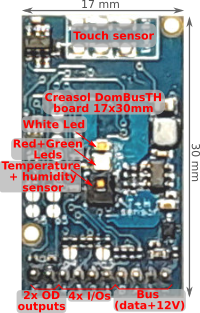 Compact board, 32x17mm, to be installed on blank cover with a 4mm hole in the middle, to exchange air for the relative humidity sensor. It can be installed in every room to monitor temperature and humidity, check alarm sensors, control blind motor UP/DOWN, send notifications (using red and green leds) and activate white led in case of power outage.
Compact board, 32x17mm, to be installed on blank cover with a 4mm hole in the middle, to exchange air for the relative humidity sensor. It can be installed in every room to monitor temperature and humidity, check alarm sensors, control blind motor UP/DOWN, send notifications (using red and green leds) and activate white led in case of power outage.
Includes:
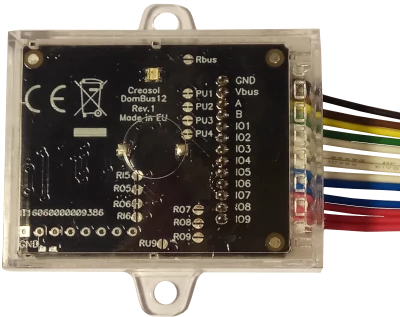 Very compact, versatile and cost-effective module with 9 ports. Each port can be configured by software as:
Very compact, versatile and cost-effective module with 9 ports. Each port can be configured by software as:
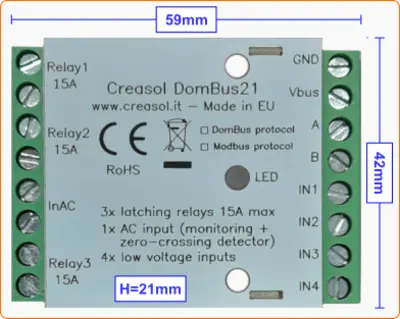 Very low power consumption module designed to enable up to 3 high power loads, up to 15A (3kW).
Very low power consumption module designed to enable up to 3 high power loads, up to 15A (3kW).
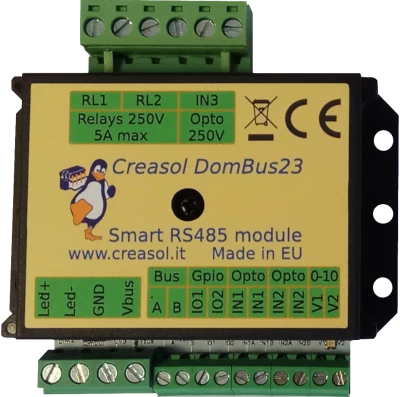 Versatile module designed to control gate or garage door.
Versatile module designed to control gate or garage door.
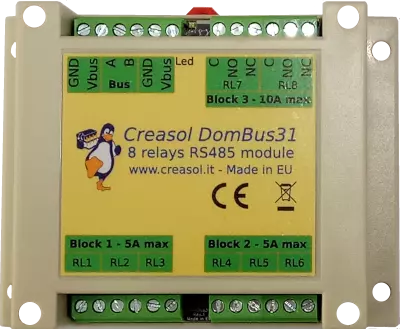 DIN rail low profile module, with 8 relays and very low power consumption:
DIN rail low profile module, with 8 relays and very low power consumption:
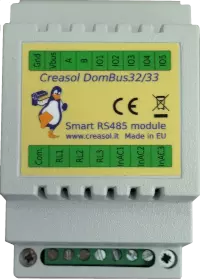 Versatile module with 230V inputs and outputs, and 5 low voltage I/Os.
Versatile module with 230V inputs and outputs, and 5 low voltage I/Os.
 Module designed to control 3 lights already existing and actually controlled by 230V pushbuttons and step-by-step relays. In this way each light can be activated by existing pushbuttons, and by the domotic controller.
Module designed to control 3 lights already existing and actually controlled by 230V pushbuttons and step-by-step relays. In this way each light can be activated by existing pushbuttons, and by the domotic controller.
Each relay can toggle the existing step-relay, switching the light On/Off. The optoisolator monitors the light status. The 5 I/Os can be connected to pushbuttons to activate or deactivate one or all lights.
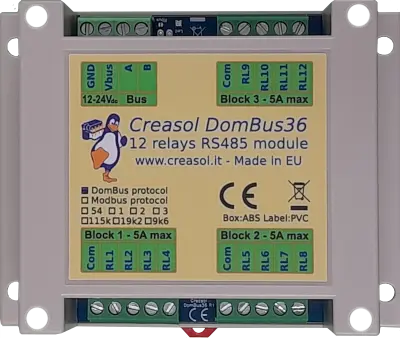 DIN rail module, low profile, with 12 relays outputs and very low power consumption.
DIN rail module, low profile, with 12 relays outputs and very low power consumption.
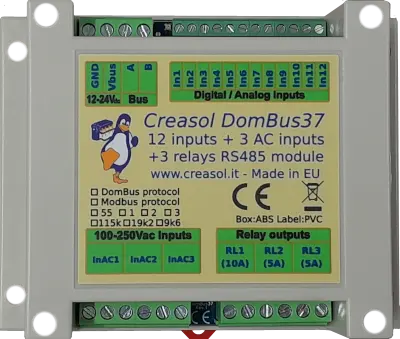 Module designed to be connected to alarm sensors (magnetc contact sensors, PIRs, tampers): it's able to monitor mains power supply (power outage / blackout) and also have 3 relays outputs.
Module designed to be connected to alarm sensors (magnetc contact sensors, PIRs, tampers): it's able to monitor mains power supply (power outage / blackout) and also have 3 relays outputs.
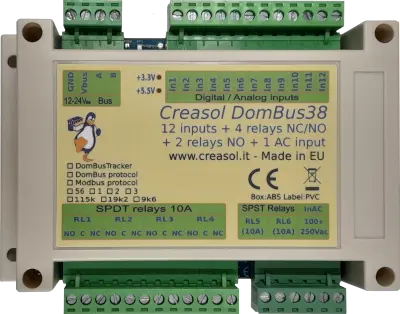 DIN rail module designed for burglar alarm system.
DIN rail module designed for burglar alarm system.
![]() DIN rail module that control azimuth + elevation/tilt motors of a sun tracker, to maximize photovoltaic energy production during the day and seasons.
DIN rail module that control azimuth + elevation/tilt motors of a sun tracker, to maximize photovoltaic energy production during the day and seasons.
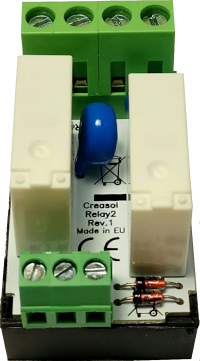 Simple module with 2 relays, to be used with DomBus modules or other electronic boards with open-collector or open-drain outputs
Simple module with 2 relays, to be used with DomBus modules or other electronic boards with open-collector or open-drain outputs
 IoT board designed for NodeMCU v3 board using ESP8266 WiFi microcontroller
IoT board designed for NodeMCU v3 board using ESP8266 WiFi microcontroller
Mesure les kW importés.
Si négatif, j'active boiler pour consommer propre énergie.
Un hub USB est nécessaire pour connecter un coordinateur zigbee et modules dombus.